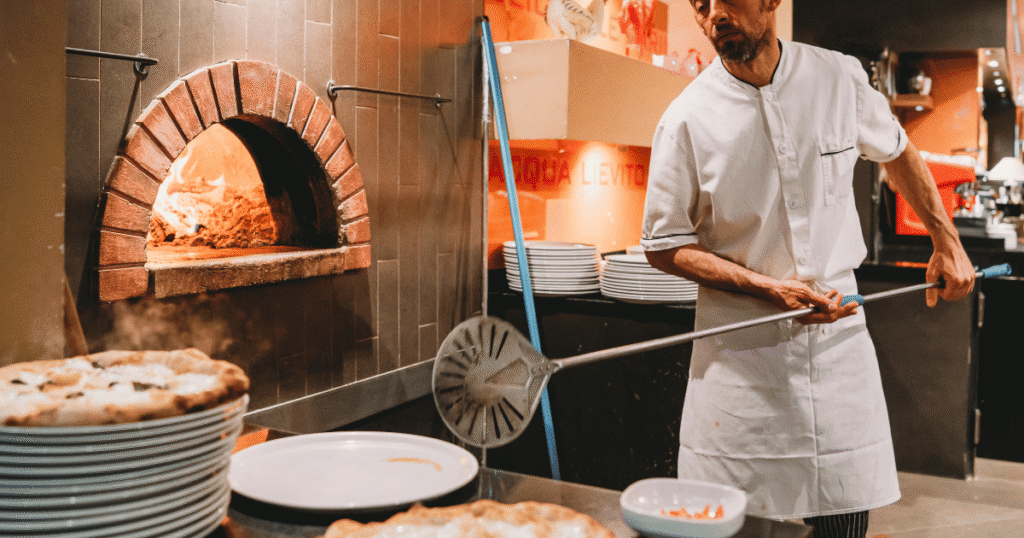In the world of food innovation, AI-generated recipes have emerged as a fascinating intersection of technology and taste. At the forefront of this trend is the concept of using artificial intelligence to craft unique, flavorful, and sometimes daring pizza recipes. In this deep-dive, we rigorously test a curated selection of AI-generated The Pizza Edition creations—evaluating them for taste, execution, and creativity. From unconventional toppings to algorithmic ingredient combinations, this is The Pizza Edition where machine meets mozzarella.
What Are AI-Generated Recipes?
AI-generated recipes are created using advanced language models and machine learning algorithms trained on thousands of cookbooks, user reviews, ingredient pairings, and cooking methods. These systems analyze flavor profiles, regional preferences, nutritional data, and culinary trends to suggest original recipes that are both innovative and palatable.
Testing Methodology: From Code to Crust
To evaluate the AI’s culinary prowess, we selected five distinct AI-generated The Pizza Edition recipes. Each was prepared according to the model’s instructions, with minor adjustments only where absolutely necessary for feasibility. The evaluation was based on the following criteria:
- Ingredient synergy
- Ease of preparation
- Creativity and novelty
- Overall taste
- Visual appeal
1. AI Pizza Creation: Spicy Mango Chicken Delight
Ingredients:
- Pizza dough (classic)
- Mango chutney base
- Diced grilled chicken breast
- Fresh mozzarella
- Red onions
- Jalapeño slices
- Cilantro
Verdict:
Surprisingly delicious. The AI combined the sweetness of mango chutney with the heat of jalapeños and the savoriness of grilled chicken to craft a gourmet-style pizza. The balance of sweet and heat was near perfect, creating an unexpected tropical twist on traditional pizza flavors.
Rating: ★★★★☆
2. AI Pizza Creation: Mediterranean Quinoa Flatbread
Ingredients:
- Thin cauliflower-quinoa crust
- Garlic olive oil base
- Kalamata olives
- Sun-dried tomatoes
- Feta cheese
- Spinach
- Oregano
Verdict:
This was AI thinking with a health-conscious brain. The base was light, crisp, and full of texture, while the toppings delivered a punch of Mediterranean flavors. While not a classic “pizza” in the strictest sense, it was refreshing, modern, and Instagram-worthy.
Rating: ★★★★☆
3. AI Pizza Creation: BBQ Pineapple Jackfruit Fusion
Ingredients:
- Sourdough crust
- BBQ sauce base
- Shredded jackfruit
- Pineapple chunks
- Vegan mozzarella
- Scallions
- Smoked paprika
Verdict:
AI goes plant-based with confidence. The BBQ jackfruit mimicked pulled pork astonishingly well, blending perfectly with the sweetness of pineapple and the kick of paprika. A great pick for vegan or adventurous eaters, this pizza was both hearty and ethically crafted.
Rating: ★★★★★
4. AI Pizza Creation: Brie and Fig Balsamic Dream
Ingredients:
- Whole wheat crust
- Fig jam base
- Brie cheese
- Arugula
- Caramelized onions
- Aged balsamic reduction
Verdict:
This gourmet-style pizza could easily find a place on a bistro menu. The fig and brie combination was luxurious, while arugula added a peppery crunch. The balsamic reduction brought it all together in a sweet-savory harmony that impressed even skeptics.
Rating: ★★★★★
5. AI Pizza Creation: Breakfast Pizza à la Mode
Ingredients:
- Hash brown crust
- Scrambled eggs
- Crumbled sausage
- Cheddar cheese
- Chopped bell peppers
- Hot sauce drizzle
Verdict:
AI went off-script here, redefining the concept of a breakfast pizza. The hash brown base was genius, providing a crispy foundation for a full American-style breakfast on top. A bold and fun twist, ideal for brunch menus.
AI vs Human Chefs: Who Wore the Apron Better?
We discovered that AI doesn’t just replicate recipes—it invents them. While traditional chefs rely on instinct, experience, and training, AI leans on data, probabilities, and trends. And yet, the output often rivals human creativity. In certain cases, like the BBQ Pineapple Jackfruit Fusion and Brie and Fig Balsamic Dream, the AI’s flair for flavor innovation genuinely surprised us.
That said, execution still rests on the human hand. Instructions can be vague or miss certain practical steps. As with any recipe, experience in the kitchen helps translate digital ideas into delicious dishes.
Common Strengths in AI-Generated Pizza Recipes

1. Ingredient Pairing
AI shows a keen understanding of ingredient synergy, often pairing bold elements like jackfruit and BBQ or fig and brie, proving it’s capable of more than just random mashups.
2. Dietary Innovation
From vegan options to gluten-free bases, AI recipes frequently include variations that cater to modern dietary needs, expanding inclusivity in creative ways.
3. Visual Appeal
These pizzas don’t just taste good—they look spectacular. AI-generated pizzas consistently include colorful ingredients and aesthetic presentation tips.
Challenges with AI-Generated Recipes
1. Lack of Context
AI doesn’t always consider cooking times or ingredient availability based on location. Some suggestions were impractical or required substitution.
2. Ambiguous Instructions
Directions like “cook until golden” or “bake at medium heat” require interpretation. While manageable for seasoned cooks, beginners might struggle.
Pro Tips for Making AI-Generated Pizza Recipes a Success
- Customize to taste. Use the AI recipe as a base and fine-tune ingredients based on your preference.
- Use fresh ingredients. Quality toppings can elevate even the strangest AI suggestions.
- Pre-test sauces and spreads. Some combinations may seem odd—always taste before applying.
- Don’t fear fusion. AI’s strength is in unexpected combinations. Lean into it.
Final Thoughts: The Future of AI in the Kitchen
As we continue experimenting with AI-generated recipes, it’s clear that artificial intelligence has a seat at the culinary table. With creativity driven by data and powered by algorithms, AI brings a fresh and fearless approach to The Pizza Edition making. Whether you’re an amateur chef, a seasoned pizzaiolo, or just hungry for something new, these recipes prove that AI isn’t just a novelty—it’s a recipe revolution.



